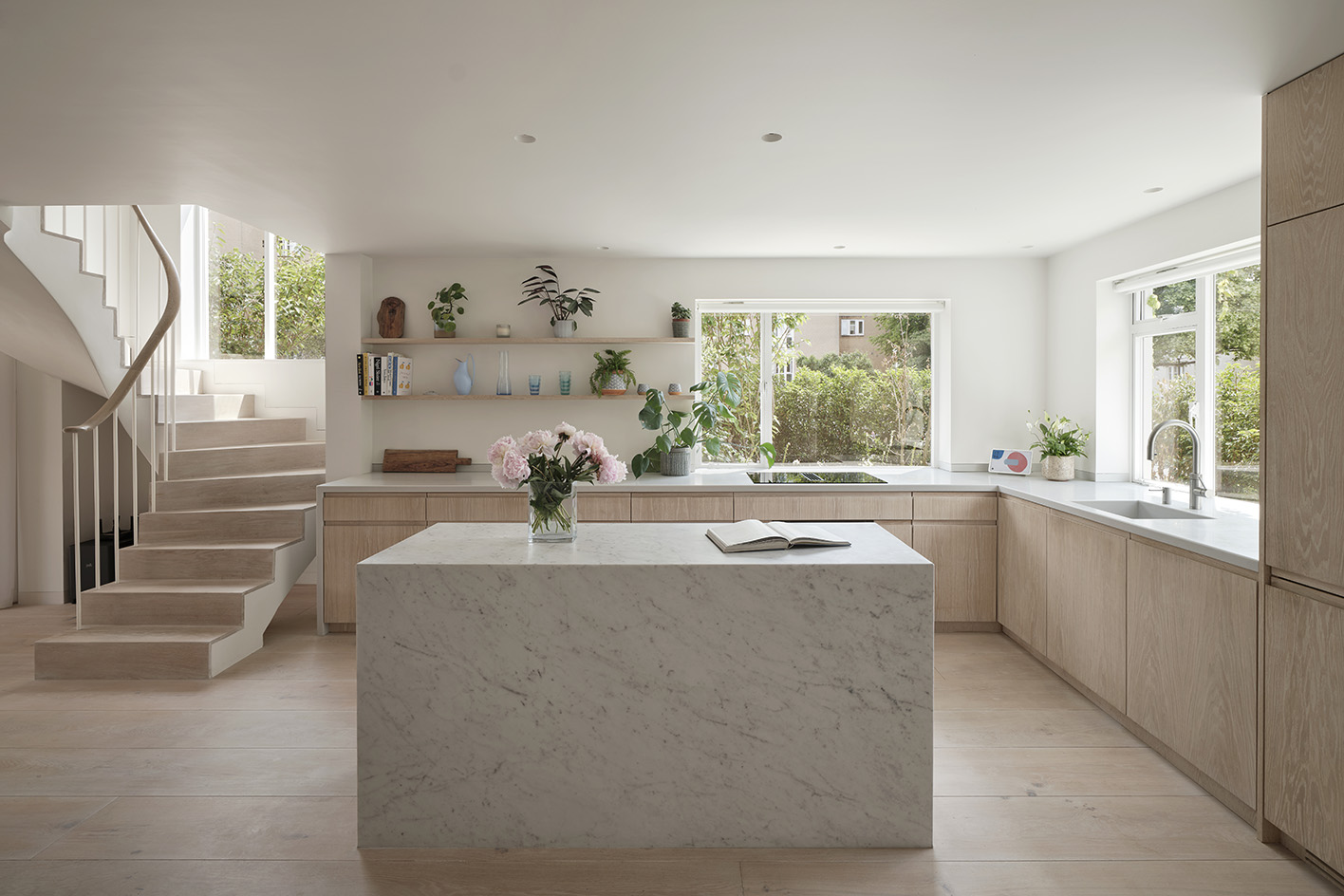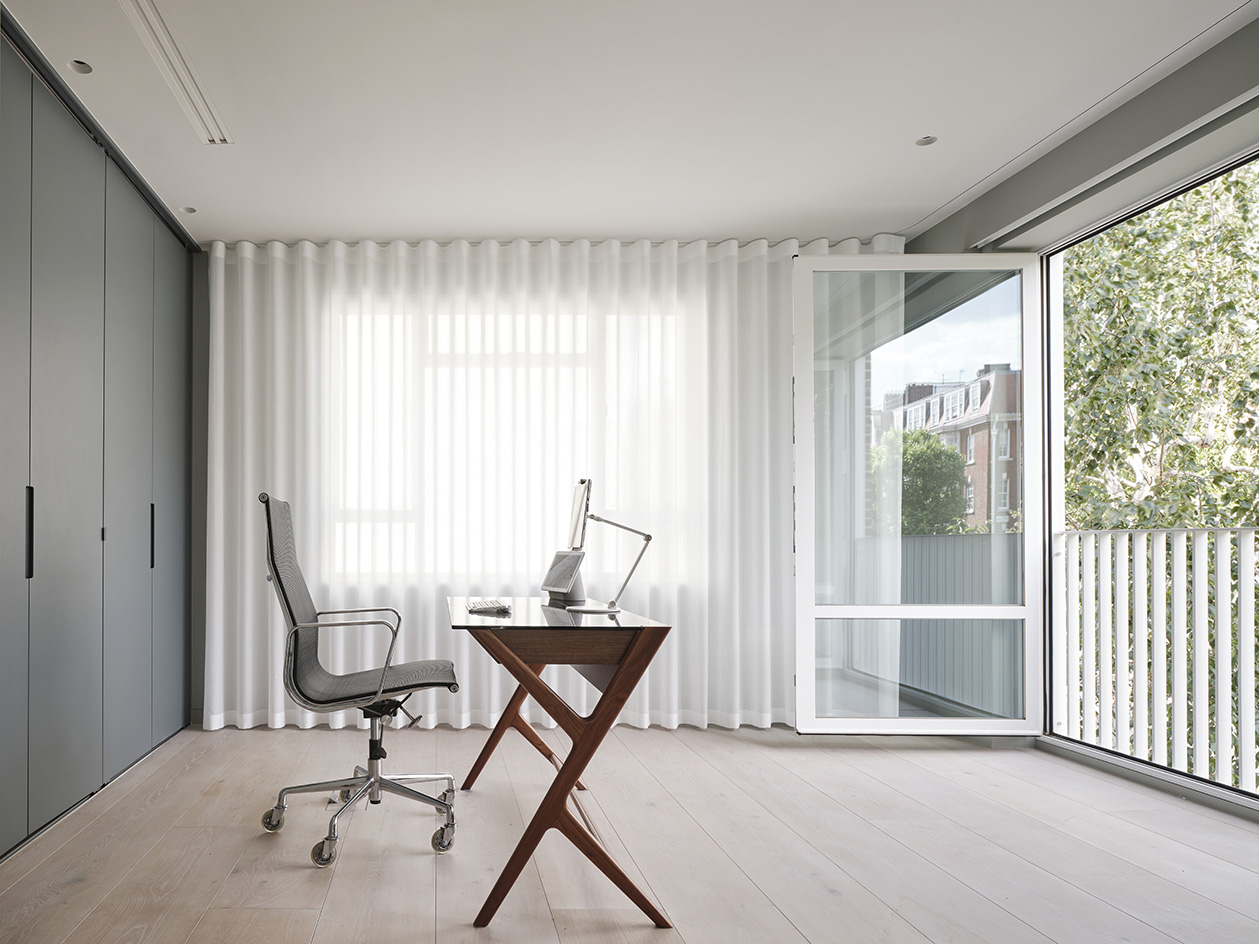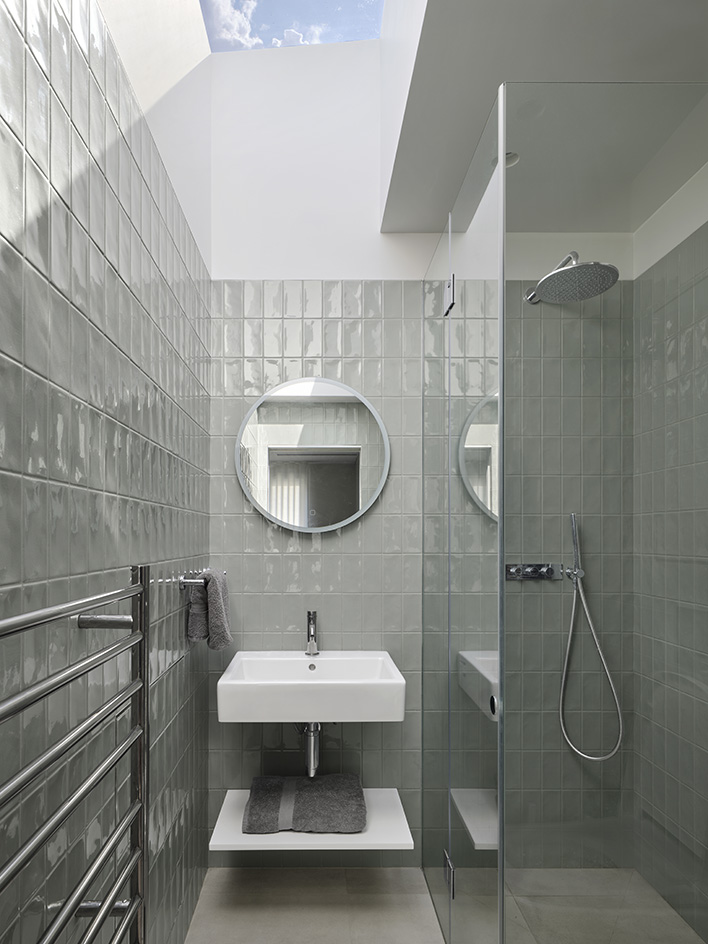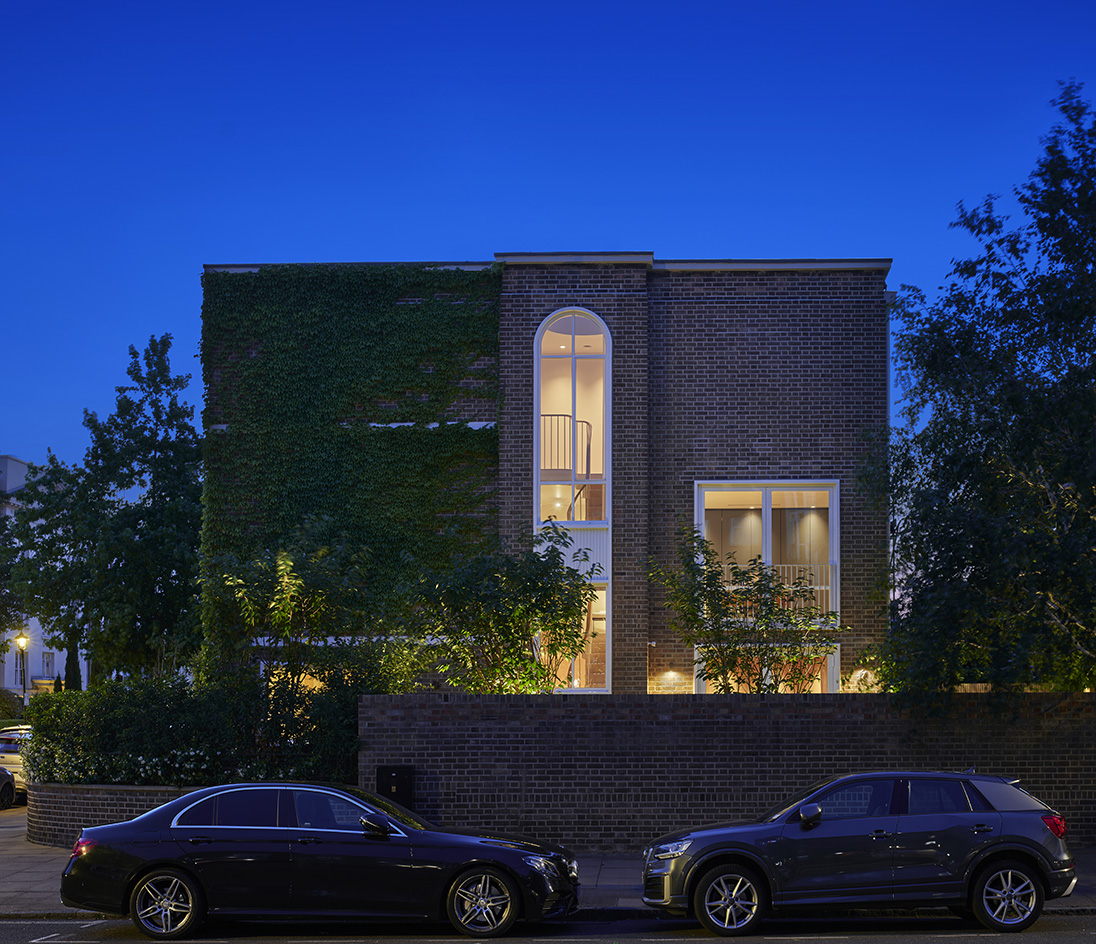Emmanuel House is a 21st-century home bringing modernism and minimalism
Emmanuel House by Dominic McKenzie is a reimagined 1950s modernist home in London’s St John's Wood

The midcentury Emmanuel House, part of a row of five homes in London's St John's Wood, has been given a gentle, 21st-century makeover by the architecture studio of Dominic McKenzie. The project, a private commission to update the family home, makes the most of the structure's modernist architecture features while wrapping them in the subtle, contemporary minimalist architecture that is the Islington practice's signature.

Tour Emmanuel House by Dominic McKenzie
The project takes its name from Emmanuel Church, which was located on the site of the row of houses before they were constructed (after the religious building was pulled down following damage during Second World War). The particular home's end-of-terrace position occupies a prominent spot in the composition, allowing for side openings and a generous garden.

It was this connection with the outdoors that McKenzie and his team aimed to make the most of during their redesign, by opening up the interior into larger, flowing spaces; adding a generous new glazing to the previously mostly blind side façade; and creating skylights to illuminate further the circulation and bathroom areas.

As a result, the living space on the ground floor allows the eye to travel, surrounded as it is in the leafy garden on three sides. From there, an existing concrete spiral stair enriched with a new, sleek, bespoke steel and timber balustrade, leads visitors to the upper level.

Curves and circular openings hint at the old church's clerestory windows and arches. Meanwhile, the round skylight above the staircase is a nod to 'the circular rooflight above the staircase in Erno Goldfinger’s home in Hampstead', McKenzie writes.

It may seem that aesthetics and the desire for a clean, pared-down interior led the design, but sustainable architecture principles were central to the solution too; even though they are 'sensitively integrated to be almost invisible in the final built project', the architect explains.

Such measures include the replacing of the windows with thermally improved double-glazed steel-framed versions (which still match the original style so as not to compromise the design's integrity); and breathable woodfibre insulation throughout, to promote lower energy consumption.
Receive our daily digest of inspiration, escapism and design stories from around the world direct to your inbox.

Further environmentally friendly features include an air source heat pump (ASHP), a mechanical ventilation and heat recovery (MVHR) system for better air quality, and solar panels on the roof. It all comes together to compose a home that is aligned with its times both in terms of looks – and function.

Ellie Stathaki is the Architecture & Environment Director at Wallpaper*. She trained as an architect at the Aristotle University of Thessaloniki in Greece and studied architectural history at the Bartlett in London. Now an established journalist, she has been a member of the Wallpaper* team since 2006, visiting buildings across the globe and interviewing leading architects such as Tadao Ando and Rem Koolhaas. Ellie has also taken part in judging panels, moderated events, curated shows and contributed in books, such as The Contemporary House (Thames & Hudson, 2018), Glenn Sestig Architecture Diary (2020) and House London (2022).
-
 Everything to look forward to in fashion in 2026, from (even more) debuts to the biggest-ever Met Gala
Everything to look forward to in fashion in 2026, from (even more) debuts to the biggest-ever Met GalaWallpaper* looks forward to the next 12 months in fashion, which will see the dust begin to settle after a year of seismic change in 2025
-
 Five watch trends to look out for in 2026
Five watch trends to look out for in 2026From dial art to future-proofed 3D-printing, here are the watch trends we predict will be riding high in 2026
-
 Five travel destinations to have on your radar in 2026
Five travel destinations to have on your radar in 2026The cultural heavyweights worth building an itinerary around as culture and creativity come together in powerful new ways
-
 Step inside this perfectly pitched stone cottage in the Scottish Highlands
Step inside this perfectly pitched stone cottage in the Scottish HighlandsA stone cottage transformed by award-winning Glasgow-based practice Loader Monteith reimagines an old dwelling near Inverness into a cosy contemporary home
-
 This curved brick home by Flawk blends quiet sophistication and playful details
This curved brick home by Flawk blends quiet sophistication and playful detailsDistilling developer Flawk’s belief that architecture can be joyful, precise and human, Runda brings a curving, sculptural form to a quiet corner of north London
-
 A compact Scottish home is a 'sunny place,' nestled into its thriving orchard setting
A compact Scottish home is a 'sunny place,' nestled into its thriving orchard settingGrianan (Gaelic for 'sunny place') is a single-storey Scottish home by Cameron Webster Architects set in rural Stirlingshire
-
 Porthmadog House mines the rich seam of Wales’ industrial past at the Dwyryd estuary
Porthmadog House mines the rich seam of Wales’ industrial past at the Dwyryd estuaryStröm Architects’ Porthmadog House, a slate and Corten steel seaside retreat in north Wales, reinterprets the area’s mining and ironworking heritage
-
 Arbour House is a north London home that lies low but punches high
Arbour House is a north London home that lies low but punches highArbour House by Andrei Saltykov is a low-lying Crouch End home with a striking roof structure that sets it apart
-
 A former agricultural building is transformed into a minimal rural home by Bindloss Dawes
A former agricultural building is transformed into a minimal rural home by Bindloss DawesZero-carbon design meets adaptive re-use in the Tractor Shed, a stripped-back house in a country village by Somerset architects Bindloss Dawes
-
 RIBA House of the Year 2025 is a ‘rare mixture of sensitivity and boldness’
RIBA House of the Year 2025 is a ‘rare mixture of sensitivity and boldness’Topping the list of seven shortlisted homes, Izat Arundell’s Hebridean self-build – named Caochan na Creige – is announced as the RIBA House of the Year 2025
-
 In addition to brutalist buildings, Alison Smithson designed some of the most creative Christmas cards we've seen
In addition to brutalist buildings, Alison Smithson designed some of the most creative Christmas cards we've seenThe architect’s collection of season’s greetings is on show at the Roca London Gallery, just in time for the holidays